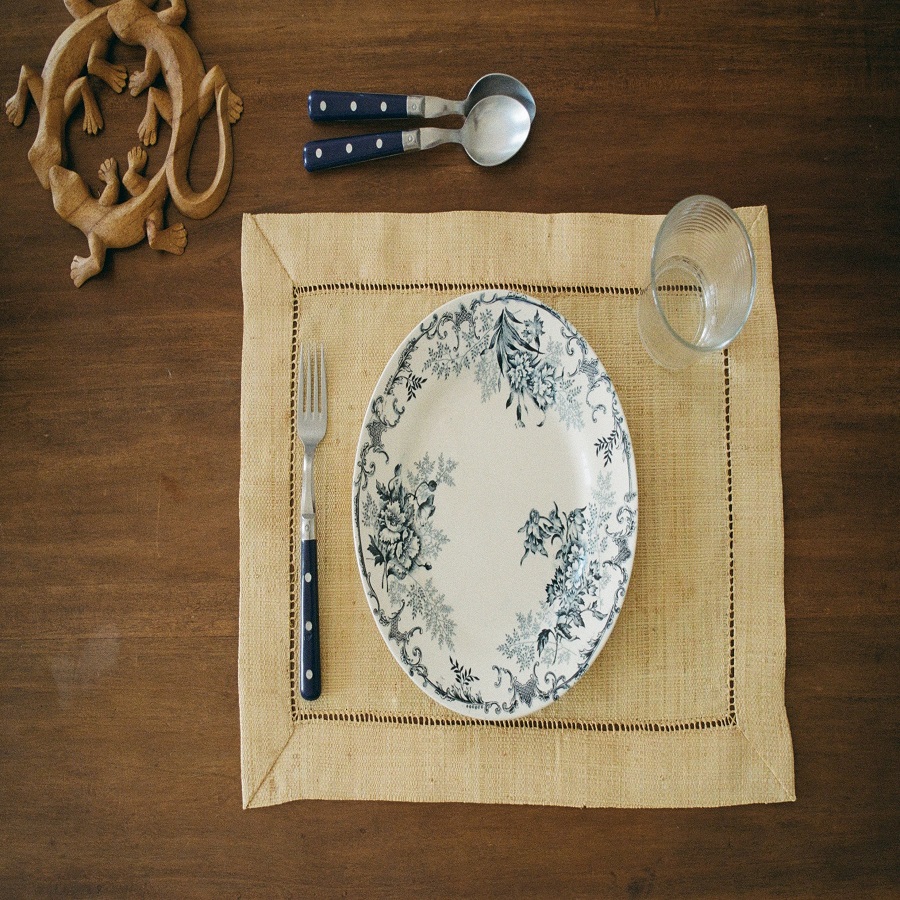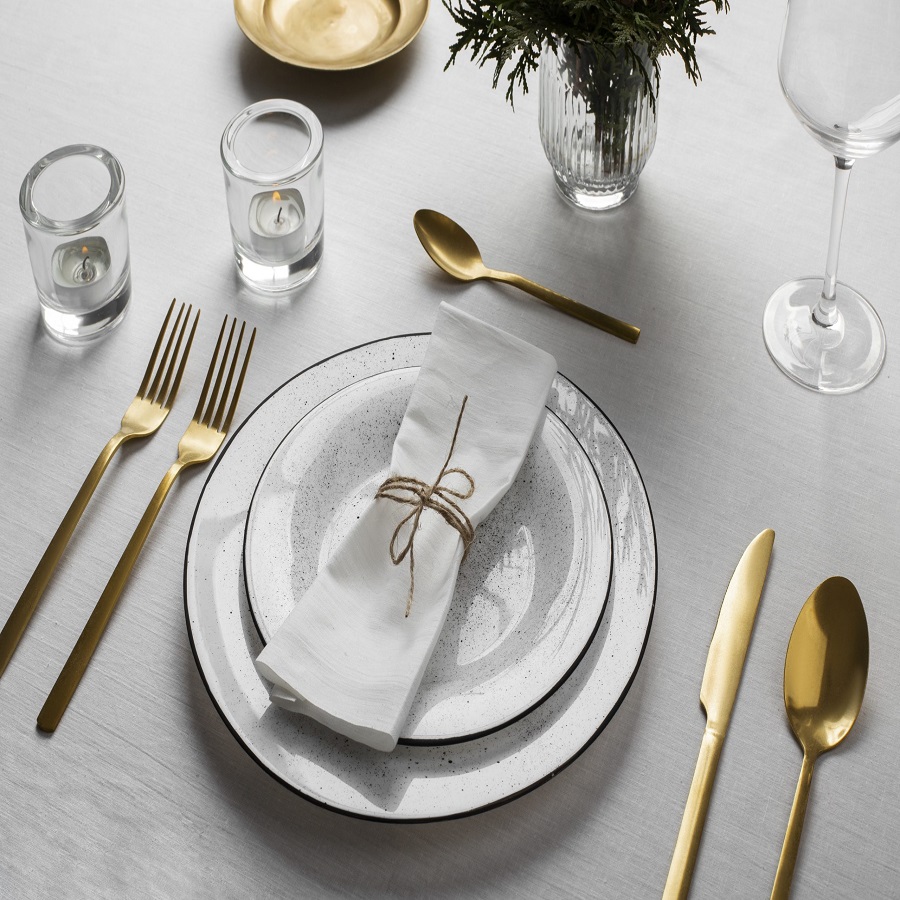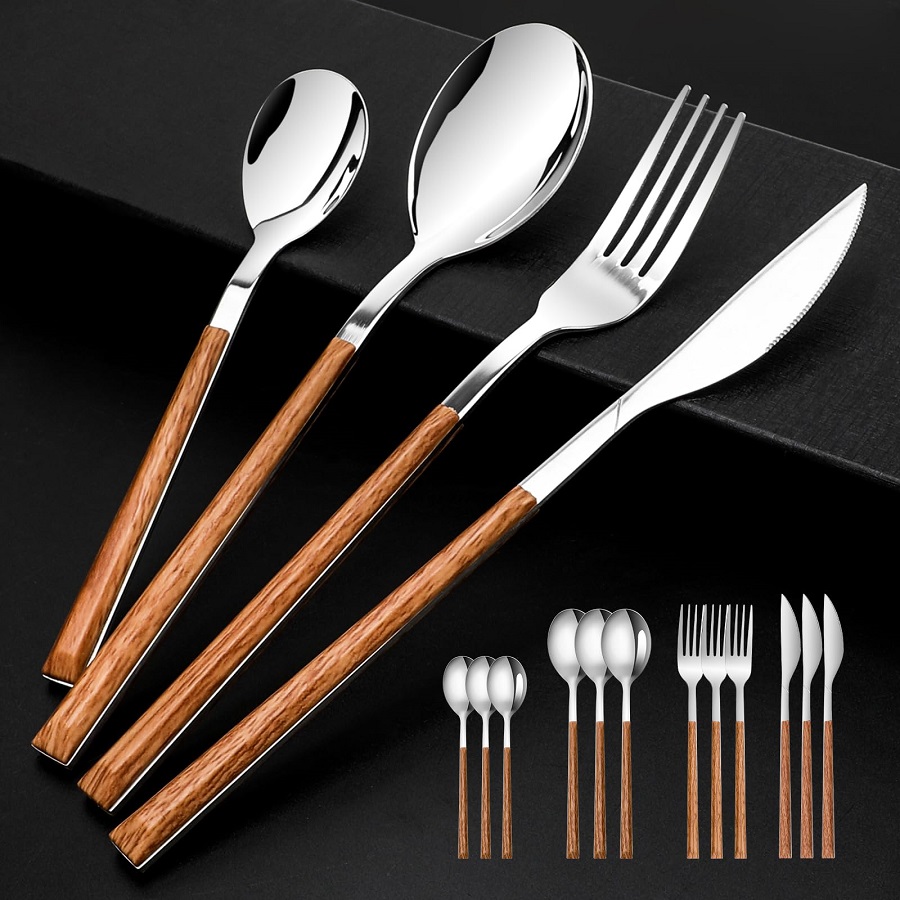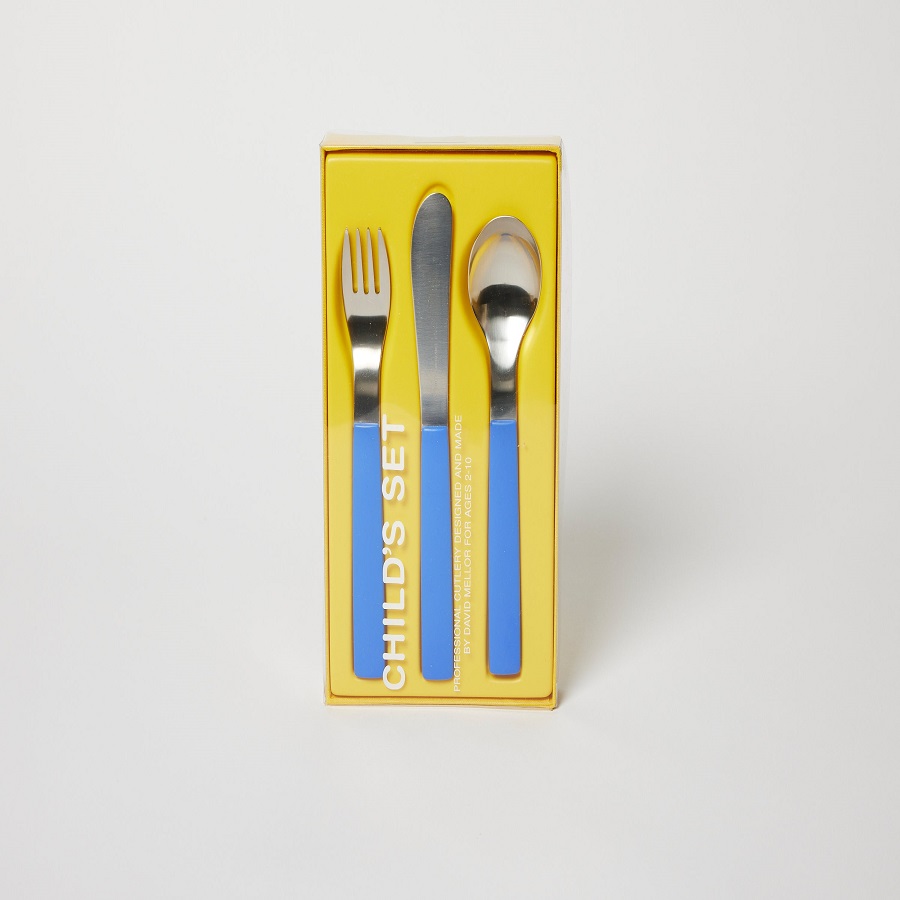The Origin and Significance of Cutlery Etiquette
Cutlery etiquette has deep historical roots. It began in ancient times. Royalty and the elite often used knives and spoons. Forks came into use much later. They showed a person’s status and manners. Over time, the use of cutlery spread to the general public.
Understanding cutlery etiquette is key in today’s dining. It shows respect and attention to detail. When guests use cutlery right, they honor their host’s efforts. It’s a silent language that speaks volumes in social settings.
Knowing cutlery etiquette can open doors. It is vital in business dinners and formal events. People often judge others based on their table manners. Using cutlery right can make a good impression. It sets the tone for the entire dining experience.
Thus, cutlery etiquette is not just about using the right fork or knife. It ties to culture, history, and social norms. It is a mark of personal refinement and cultural understanding. Mastering it can boost one’s confidence in various social situations.
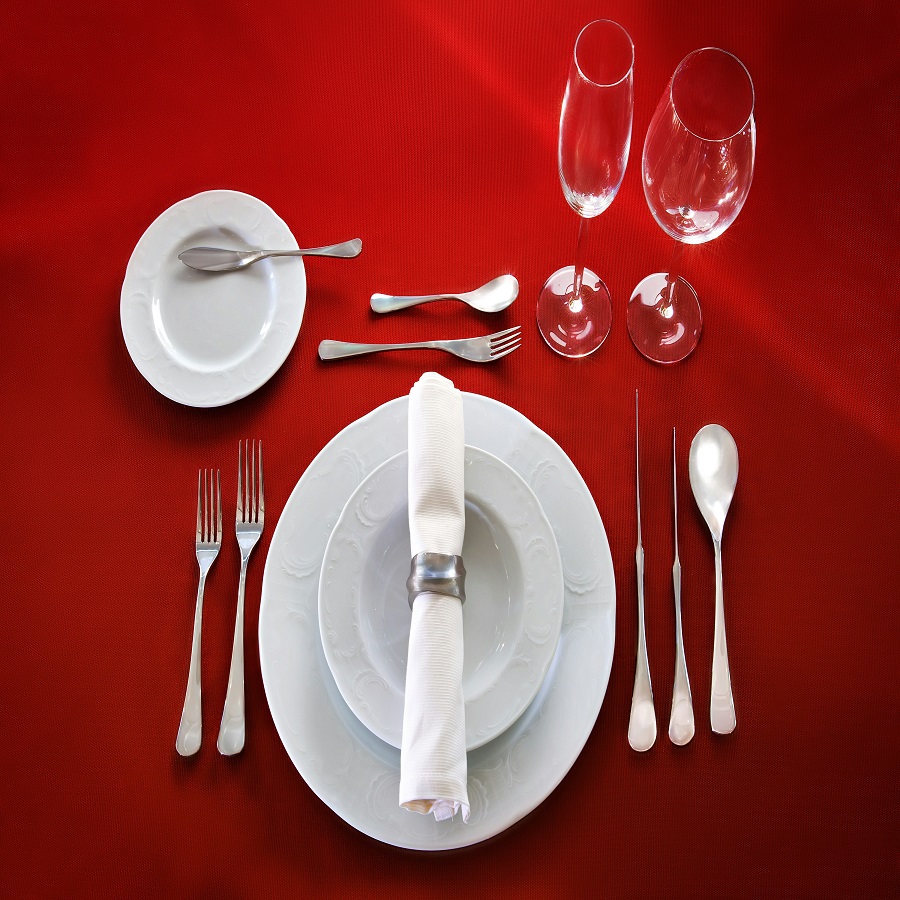 Understanding the Table Setting: A Primer
Understanding the Table Setting: A Primer
Understanding the table setting is the first step to mastering cutlery etiquette. The way cutlery is arranged on the table is not arbitrary; it follows a specific order that is designed to facilitate ease of use and to reflect the progression of the meal. Generally, a typical Western table setting includes the following basic elements:
- Plates: The main plate is the centerpiece of the setting and may be preceded by a charger plate.
- Forks: These are placed to the left of the main plate. The order relates to the courses, with the fork for the first course placed furthest from the plate.
- Knives: Situated to the right of the plate, the sharp edge of the knife blades should face inward.
- Spoons: Also to the right, spoons are often positioned after the knives, following the same ordering principle as forks.
- Glassware: Placed above and to the right of the dinner plate. The water glass is the most used, thus it’s often placed closest to the diner.
- Napkins: These can be found on the plate or to the left of the forks.
The placement of cutlery often signals which cutlery to use with each course, starting from the outside and working inwards as the meal progresses. Moreover, recognizing the types of cutlery and their correct usage is pivotal in adhering to proper etiquette.
By familiarizing oneself with the table setting, a guest can avoid confusion and focus on the dining experience. Remembering the layout also helps in setting a table correctly, which is an aspect of hosting that demonstrates attention to detail and respect for the dining customs. Use this primer as a stepping-stone to gracefully engage with the more intricate aspects of cutlery etiquette.
The Basics of Cutlery Use: Forks, Knives, and Spoons
Understanding how to use forks, knives, and spoons correctly is key to cutlery etiquette. Each piece has a purpose and a right way to use it.
Forks
Forks are for holding food while you cut or for bringing food to your mouth. Start with the fork furthest from your plate. This is for your first course. Move inward with each course. Pick up your fork with your left hand. Hold it with the tines curving downwards.
Knives
Use knives for cutting. Pick them up with your right hand. The sharp edge should always face toward your plate. Use the knife and fork together. The knife cuts; the fork holds. After cutting, rest your knife on the plate. Use it as needed.
Spoons
Spoons are for soups, desserts, or any dish with a lot of liquid. Hold your spoon like a pencil. Use it with your right hand. Sip from the side of the spoon, not the tip. If you have a soup plate, move the spoon away from you to scoop. Bring it to your mouth carefully.
Remember these tips to make dining smoother. Good cutlery use is a sign of respect. It also shows that you know the dining rules.
Navigating through Western dining courses with proper cutlery use is crucial. This part of cutlery etiquette ensures a seamless dining experience. It also demonstrates respect for the meal and its presentation.
When faced with a multi-course meal, one should recall the basics. Begin with the outermost fork and knife. These correspond to the first course, often an appetizer or salad. Use them, and then, as the meal advances, move inward for subsequent dishes.
For the main course, you typically use the larger fork and knife placed closer to the plate. As a guest, expect a possible shift in cutlery for this part. Servers might introduce a steak knife or a special fork if needed. Adapting quickly shows a command of cutlery skills.
After the main course, a cheese course may follow. Sometimes, there’s dedicated cutlery for this. If not, use the cutlery closest to your plate.
Lastly, dessert cutlery often rests above the plate or is brought in with the dessert. A fork and a spoon might be available. Use the fork to steady the dessert and the spoon to eat, especially if the dessert is soft or served in liquid.
By navigating cutlery correctly through Western dining courses, one can enjoy the meal with grace and proper etiquette. Remember: start from the outside and work your way in, respect the order of the courses, and handle your cutlery with ease. Doing so will reflect your knowledge of cutlery etiquette and make dining a refined experience.
Cutlery Etiquette Around the World: A Cultural Perspective
Cutlery etiquette varies greatly across cultures, making dining abroad an exciting experience. To feel poised and respectful, it’s crucial to understand these variations. Here’s a glimpse into the fascinating world of international cutlery customs.
In many Asian countries, chopsticks reign over forks and knives. Hold them at the top, not in the middle. Never stick chopsticks vertically into your food. In Japan, it’s impolite, as it resembles a funeral rite. Rest them on the holder when not in use. Soup spoons often accompany chopsticks for broth-based meals.
If dining in the Middle East, be aware that some regions prefer using the right hand over cutlery, especially when eating traditional dishes such as rice and meats. Washing your hands before and after the meal is a significant practice there. In formal settings, though, standard Western cutlery may be used.
Head to Europe, and you’ll notice the fork and knife are used differently. In some countries, the fork is held in the left hand with tines down, and the knife in the right. Once a piece is cut, it’s eaten off the back of the fork. Standard cutlery placement is consistent, but the method varies.
Remember these tips when traveling or dining in international communities. Being sensitive to cultural differences in cutlery use can enhance interpersonal relations. It reflects well on your cultural intelligence and adaptability. Always do a bit of research or observe fellow diners to ensure you practice the appropriate customs.
The Do’s and Don’ts of Cutlery Etiquette
When it comes to cutlery etiquette, there are clear dos and don’ts to follow. These not only reflect your manners but also your respect for the host and fellow diners. Let’s delve into the essential guidelines that will keep you in good stead at the dining table.
- Do Use the Right Cutlery for Each Course: This is a cornerstone of cutlery etiquette. Start from the outside and work your way in with each course.
- Don’t Use Cutlery out of Order: Jumping ahead to use a knife or fork intended for a later course can confuse the meal’s flow.
- Do Hold Cutlery Properly: Forks in the left hand, knives in the right with the blade facing in. Spoons are held like a pencil.
- Don’t Cut Your Food All at Once: Avoid cutting everything up front. Cut as you go to show patience and attention.
- Do Pause Between Bites: Place your cutlery on the plate between mouthfuls. It signals that you’re still eating but resting. Cross the fork and knife on the plate to pause, and parallel to signal you’re done.
- Don’t Speak with Cutlery in Hand: If you want to talk, put your cutlery down to avoid gestures that can seem aggressive or impolite.
- Do Use the Cutlery for its Intended Purpose: Remember, the soup spoon is for soup, the butter knife for butter. Mixing these up shows a lack of awareness.
- Don’t Gesture with Cutlery: Pointing with a knife or fork can come across as rude. Keep cutlery directed down when not in use.
- Do Place Cutlery on the Plate When Finished: Indicate you’re done by placing your knife and fork parallel on the right side of your plate.
By keeping these do’s and don’ts in mind, you maintain a smooth, elegant dining experience that exudes confidence in cutlery etiquette. These guides are not just about ‘right’ and ‘wrong’ but about participating gracefully in a shared cultural practice.
Advanced Cutlery Techniques for Formal Dinners
Formal dinners often come with an elevated set of cutlery rules. These settings can intimidate even the most seasoned diners. Yet, with a few advanced techniques, one can navigate with ease and elegance.
Always start with the outer cutlery and progress inwards as courses come and go. For fish courses, use the specialized fish fork and knife. The fish knife, which is broader and less sharp, helps you skillfully separate the meat from bones.
In a formal setting, you might encounter an oyster fork. Remember, this is the only fork that is on the right side of your plate. Use it exclusively for seafood starters.
When you come across a cheese course, use the individual cheese knife provided. Cut off a piece of cheese and place it on your bread or plate, not directly into your mouth.
At a formal dinner, the way you rest your cutlery also sends a message. To indicate a pause, gently rest your fork and knife on your plate with the handles at four and eight o’clock and the tips meeting at the plate’s center. To signal that you’re finished, lay your fork and knife parallel on the right side of your plate.
If multiple glasses are at your setting, use them in the order of the courses. The water glass stays constant, but the wine glasses shift according to the drink paired with each course.
Mastering these advanced cutlery techniques demands practice. But it’s worth the effort. They show a high level of dining sophistication and respect for the occasion.
Teaching Children the Fundinals of Cutlery Etiquette
Instilling cutlery etiquette in children can be a rewarding task. It sets the foundation for respectful dining habits as they grow. Here’s how you can teach young ones the fundamentals of cutlery etiquette in a fun and engaging way.
Start by explaining the importance of using cutlery properly. Tell them it shows respect to the person who cooked the meal. Also, using forks, knives, and spoons right is part of good table manners. Keep the language simple and positive to maintain their interest.
Show them the basic table setting. Let them practice placing forks, knives, and spoons in the right order. Make it a game. Ask them to set the table for dinner. Praise their efforts to encourage them.
Teach them how to hold and use cutlery correctly. Forks go in the left hand, knives in the right. Show them how to cut food and bring it to their mouth safely. Use softer foods for easier practice.
Lead by example. Children learn by watching adults. Use your cutlery correctly when you dine with them. They will follow your lead.
Be patient and offer gentle corrections. If they make a mistake, guide them kindly. Avoid harsh words that might discourage them. Remember, practice makes perfect.
Give them time to learn and praise their progress. Celebrate the small victories to motivate them. With time and practice, they will master the basics of cutlery etiquette.

